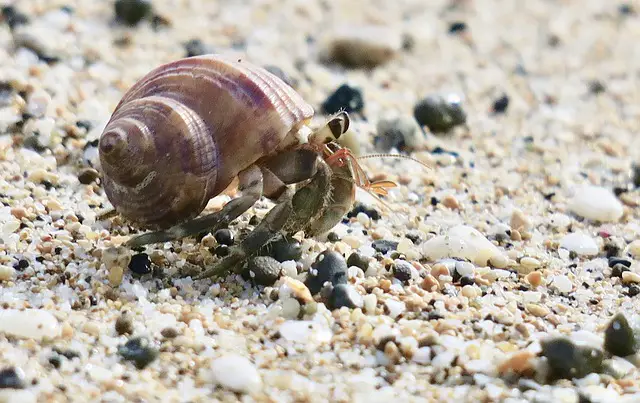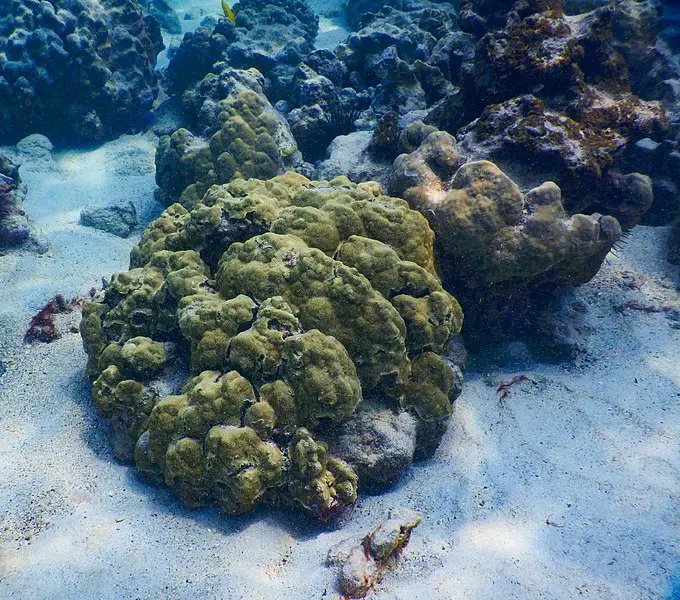Hermit crabs can certainly live in freshwater, but on the whole, it’s recommended that they have access to saltwater as well as the fresh variety. Your tank water, ideally, needs to be a blend, but treated and balanced so that any potential chlorine entering the tank is neutralized – chlorine is deadly to hermit crabs, and regardless of their preferred water conditions, you need to remove it. While you will find hermit crabs living in a variety of water conditions worldwide, you should consider setting up a saltwater dish for them in a freshwater tank.
Saltwater that you prepare for a hermit crab should be appropriate for marine life. While hermit crabs can live in freshwater, you’re going to need to ensure they have access to both kinds to ensure they get all the nutrition they need to thrive from day to day. Hermit crabs are highly popular pets, but they do need careful attention – as emulating their wild conditions is not always so simple.
Hermit crabs can be saltwater by nature, as can many other crustaceans – in fact, the vast majority of crabs alive in the world are considered saltwater beasts. Don’t always make assumptions about which water is best for your crab – check with an expert first!
Can mud crabs live in freshwater?
Mud crabs, too, are able to live in freshwater, however, not for very long – though research has proved that the salinity of water is important for the survival of mud crabs, the temperature of the water is equally if not more important. The pollution of water is also a critical factor to consider for the healthy survival of mud crabs in the wild.
Mud crabs can live in freshwater, though it’s not recommended – and this certainly isn’t what they are used to in wild conditions. Mud crabs are known to thrive in areas with freshwater as a natural occurring ‘run off’ – they are found in the shallows, and where brackish water prevails. Of course, regardless of where they are known to live, including the water standards they are better suited to, mud crabs are at risk from a variety of different predators.
Mother crabs of this species have been known to stray from water sources for miles at a time, however, it’s worth remembering that this is only for a short period. When owning a mud crab in a tank, it’s best to only really subject them to freshwater when you need to clean out their environment!
Can fiddler crabs live in freshwater?
Fiddler crabs live mostly on land, usually in sand or mud. They live happily in brackish water and are ideally suited to live in the waters you will commonly find around marshland – you’ll also find that fiddler crabs are plentiful in the regions of South America and Mexican Gulf. When it comes to freshwater, the answer is much the same as what you’d expect from mud crabs.
Fiddler crabs cannot live in freshwater for long periods, meaning that they tend to thrive better in either saltwater or the brackish conditions you will normally find them in out in the wild. These tiny critters are fascinating in the sense that they are actually semiaquatic, which of course means that they are not always wholly dependent on water. That said, the average fiddler crab cannot afford to ‘dry out’ – they need wet gills to be able to survive.
Fiddler crabs make for interesting reef tank additions, however, keep in mind that the water they inhabit will need to be a careful balance between saltwater and freshwater, therefore the brackish standard mentioned above. As you will hopefully already be measuring pH, calcium and more, it’s likely that you will need to keep salinity in check alongside to raise healthy fiddlers.
Can Horseshoe Crabs live in freshwater?
Horseshoe crabs are adept at evolving and have gained a reputation as the longest living, most successful animal life on the planet! However, much like many other species of crab, they can only survive for a short time out of water – and when it comes to whether or not this species can actually live in freshwater or not, the answer’s a little trickier than you might expect. Ultimately, it really depends on the type of horseshoe crab you are considering.
Some horseshoe crabs live in freshwater exclusively, such as the Mangrove Horseshoe Crab – whereas others can live in a varying level of salinity. Research varies in this regard – meaning that to some degree, it’s expected that a horseshoe crab will normally thrive in water that’s a blend of fresh and saline. When raising any type of horseshoe crab in your own reef tank, therefore, be sure that you keep a close eye on the salinity levels, just as you should be keeping a close eye on the pH and calcium.
Horseshoe crabs are just as rewarding tank mates for your reef aquarium as you may expect from any other species. However, while some crabs may fare well in freshwater alone, the best practice to take with a horseshoe is to offer it a little salinity.
Are Thai devil crabs able to live in freshwater?
Yes, Thai devil crabs are not fully aquatic and are ideal as pets in freshwater tanks – and most of the time, it is the condition and temperature of the water that affects them more than the salinity. Thai devil crabs are popular pets as they have pleasant dispositions and are very striking to look at – at the same time, however, you do owe them a duty of care in that you need to keep their water conditions running at a healthy balance.
The Thai devil crab is unlikely to spend much time out of the tank, however, it’s able to do so with ease – and if you have an entirely freshwater tank, they can make interesting additions. Of course, it is always a good idea to learn more about the crabs you adopt at the point of purchase / adoption – so you can be sure that they are set to thrive in your home tank without any concerns or issues.
Thai devil crabs are actually regarded as some of the simplest to look after, however, they are also some of the most rewarding. Freshwater crabs are not necessarily the simplest of animals to care for, but these critters in particular make great starting points.


